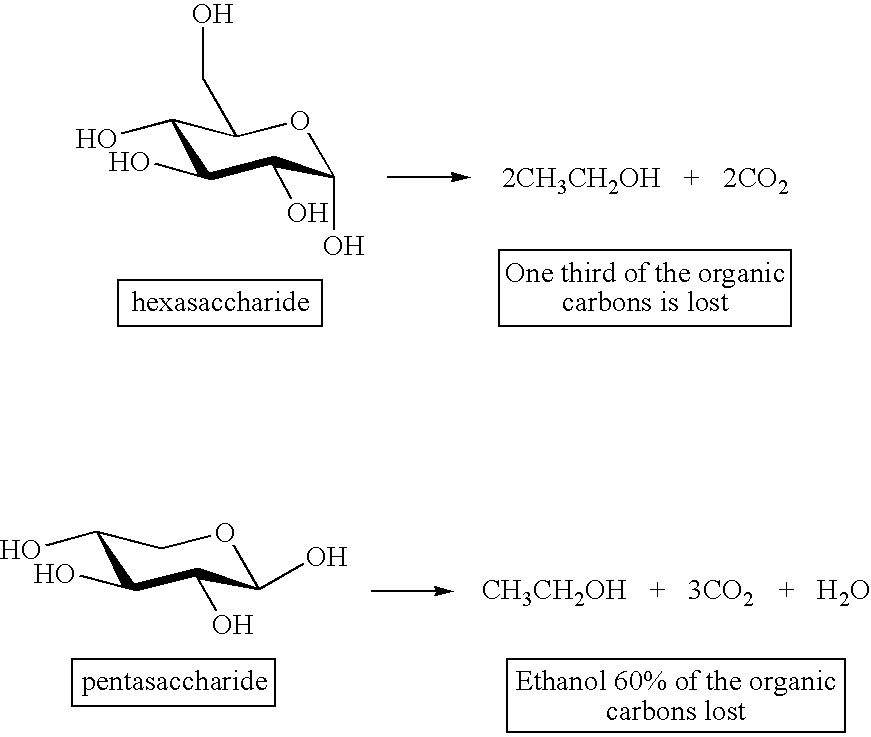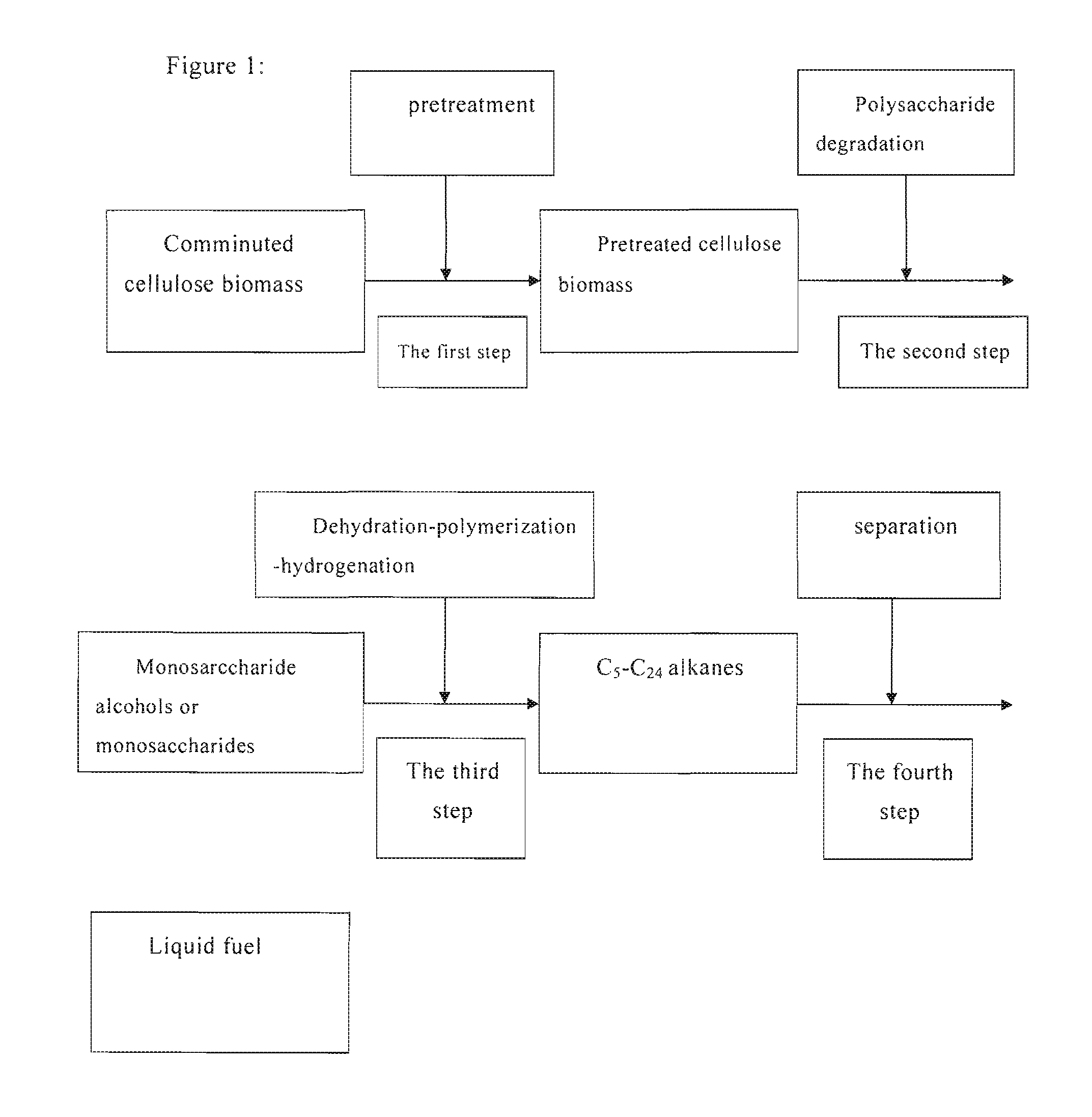Process of producing liquid fuel from cellulosic biomass
a technology of cellulosic biomass and liquid fuel, which is applied in the direction of hydrocarbons, metal/metal-oxide/metal-hydroxide catalysts, chemical/physical processes, etc., can solve the problems of huge loss of organic carbons in the production process through fermentation, high cost of ethanol fuel, and total loss. , to achieve the effect of high efficiency
- Summary
- Abstract
- Description
- Claims
- Application Information
AI Technical Summary
Benefits of technology
Problems solved by technology
Method used
Image
Examples
example 1
Preparation of Actived Carbon
[0091]A powder of 100 g glucose was heated to 400° C. in nitrogen stream, wherein the color of glucose changed gradually from white to brown and finally to black. This reaction took about 16-20 hours. After heating was ceased, the resulting black solid was cooled to room temperature under the protection of nitrogen and then crushed. Then, the resultant was transferred into 600 ml 99% concentrated sulfuric acid which had been deoxygenated by flushed with nitrogen. Under the protection of nitrogen and slow stirring, the resulting mixture was heated to 150° C. and kept for 15 hours. Then, the mixture was cooled to room temperature before it was diluted with 5 times by volume of distilled water. The temperature was kept not higher than 50° C. The black solid product was washed with heat distilled water until no sulfate ion was detected, and then it was vacuum dried. No metal commonly found in conventional actived carbon such as iron, lead and copper was dete...
example 2
Preparation of Ruthenium / Actived Carbon Catalyst
[0092]A solution of 0.77 g ruthenium trichloride in 1000 ml deionized water was mixed with 10 g actived carbon in Example 1 under the protection of nitrogen. After 2 hours of stirring, the water was evaporated completely, and the resulting solid was washed with deionized water to remove all chlorine ions. The solid catalyst was activated at 400° C. in hydrogen stream to give ruthenium / actived carbon catalyst. The catalyst was sampled and analyzed for three times, which showed that the content of ruthenium was in the range of 3.6-3.9%, of which the average value is 3.8% based on the weight of support.
example 3
Preparation of Platinum / Acidic Alumina Catalyst
[0093]A solution of 1.0 g tetrammine platinum nitrate in 100 ml deionized water was mixed with 10 g acidic alumina under the protection of nitrogen. After 2 hours of stirring, the mixture was filtered, and the resulting solid was dried in vacuum at 60° C. for 12 hours. The solid obtained after drying was calcined in helium stream containing 20% oxygen, wherein the temperature was raised under a rate of 1° C. / min. to 150° C. and then kept at this temperature for 2 hours. Then, the solid catalyst was activated at 300° C. in hydrogen stream to give platinum / acidic aluminum catalyst. The catalyst was sampled and analyzed for three times, which showed that the content of platinum was in the range of 4.9-5.2%, of which the average value is 5.0% based on the weight of support. The analyzing method was a conventional one in which an amount of catalyst was dissolved in aqua regia and diluted to certain concentration before the content of platinu...
PUM
| Property | Measurement | Unit |
|---|---|---|
| reaction time | aaaaa | aaaaa |
| pressure | aaaaa | aaaaa |
| temperature | aaaaa | aaaaa |
Abstract
Description
Claims
Application Information
 Login to View More
Login to View More - R&D
- Intellectual Property
- Life Sciences
- Materials
- Tech Scout
- Unparalleled Data Quality
- Higher Quality Content
- 60% Fewer Hallucinations
Browse by: Latest US Patents, China's latest patents, Technical Efficacy Thesaurus, Application Domain, Technology Topic, Popular Technical Reports.
© 2025 PatSnap. All rights reserved.Legal|Privacy policy|Modern Slavery Act Transparency Statement|Sitemap|About US| Contact US: help@patsnap.com


